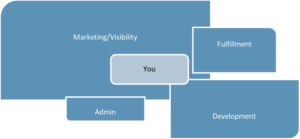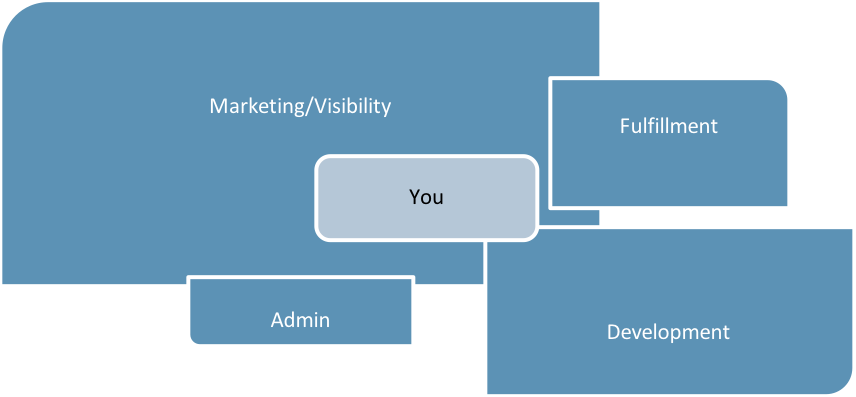 Last week we spoke about the 3 Types of Entrepreneurial Overwhelm and I promised that we’d discuss the “3 Business Growth Stages™” and how to know where you are and what to do.
Last week we spoke about the 3 Types of Entrepreneurial Overwhelm and I promised that we’d discuss the “3 Business Growth Stages™” and how to know where you are and what to do.3 Business Growth Stages:
1. Foundation and Get Clients: Your focus is to generate revenue and get clients while you’re building the visibility and credibility foundation of your business.
2. Adding Leverage: Now that you’re consistently hitting revenue goals, covering your expenses (including salary, taxes, retirement, etc.), it’s time to build in leverage so you’re not doing everything all the time and can enjoy the money you’re making.
3. Sustained Growth & Increased Profits: You have a pipeline of clients, you’ve incorporated some leverage into your business and your focus is on increasing profits and truly making your business hum.
Sounds simple, right?
The issue is that so many business owners jump to Stage 2 or 3 without either building a Foundation or Getting Clients.
How many colleagues do you know who “want a membership program” and try launching one when their last several programs didn’t fill or they announce a product and have very few s.a.l.e.s?
My guess is “too many” and it’s because they ignore the Foundation and 1st Stage of their business.
What often happens is that Stage 1 business owners want to achieve success quickly – become profitable, earn 6 figures, host a high level program or offer high level consulting services, all when no one knows who they are or whether they’re even going to stay around.
Stage 1 business owners are often easily seduced by those who cater to opportunity seekers – simply because you’re so anxious to generate revenue. As a result, you end up in debt with very little to show for it.
A Stage 1 business owner is defined as someone who needs clients. Period.
If you’re wondering, or worried, about where your next client (or mortgage payment) is coming from, you’re currently in Stage 1.
~~~~~~~~~~~~~~~~~~~~~~~~~~~~~~~~~~~~~~~~~~
My Request to You:
As a Stage 1 business owner whose primary business responsibility is to Increase Visibility & Credibility AND Get Clients, you want to spend a minimum of 65% of your “working” hours on Marketing & Visibility activities. (See graphic at beginning of article.)
What are marketing and visibility activities?
- Consistently sending out email communications
- Hosting free teleseminars/webcasts/webinars
- Participating in telesummits
- Being a guest on others’ teleseminars
- Speaking at events
- Website “free taste” or giveaway
- Sponsorships – getting and giving
- Posting and sharing videos
- Consistently participating in social media
- Consistently “contacting” your readers so you remain top of mind
- Article marketing
- Consistently posting to your blog
- In-person networking
- Online forums
- Attending events
- Picking up the phone and calling
- Press releases
- Guest blogging on others’ sites
- Posting and sharing audio newsletters
- Hosting/Being a guest on radio shows/podcasts
- Sending snail mail gifts, cards, lumpy mail
And SO much more. . .
Now, before you go deep into “Too Much To Do” overwhelm, let me stop you and say, you don’t need to do all of the above. In fact, don’t even try to do them all out of the gate.
Pick no more than 3 things which resonate with you and your ideal clients and do them CONSISTENTLY. Once you have those nailed down, add something else.
It’s about consistently layering things on. It is not about burying yourself in overwhelm trying to be all things to everyone in the visibility world.
For example, my ideal clients are on Linked In more than any other social media platform. So I share more thought leadership and deeper-level information there (sprinkled with inspirational/motivational posts) than I do elsewhere. I regularly post to Instagram and share more “snippet posts” or personal pics there and share to Facebook and Twitter.
The result? I’ve got a presence on each of the four main platforms without spending hours on social media platforms.
Remember…
Ordinary Things, Done Consistently,
Create Extraordinary and Consistent Results
Next week, we’ll talk about Stage 2 and Stage 3 businesses…
